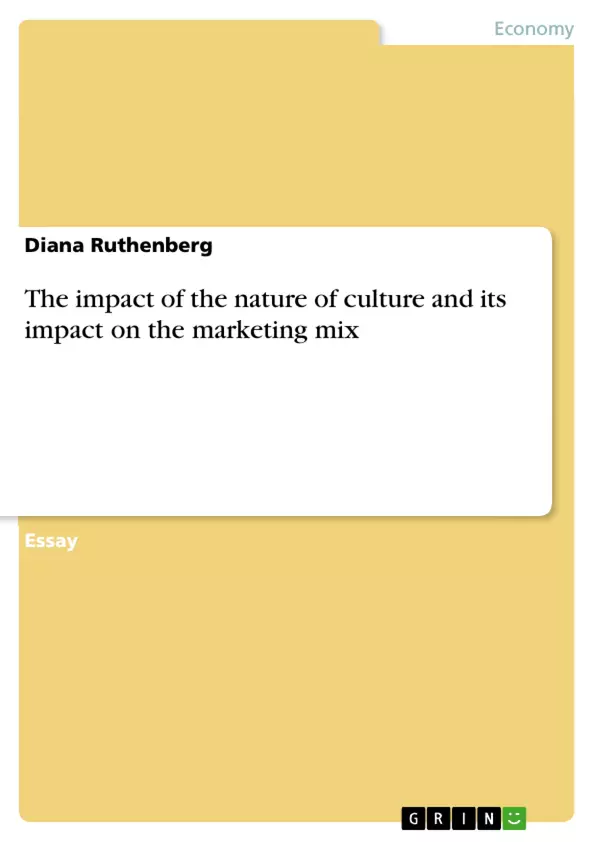Cultural distance has received a great deal of attention in the international business literature. It has been identified as a key factor in explaining foreign market attractiveness, expansion patterns, the degree of adaptation of marketing and retailing strategies, modes of entry and organisational performance.
Therefore it has become more and more important for international companies to take into consideration all factors which could have an influence on the marketing plans and finally on a company’s performance. Thus the impact of the nature of culture and its impact on the marketing mix will be examined by establishing a relationship between cultural components and the components of the marketing mix.
Inhaltsverzeichnis (Table of Contents)
- Abstract
- Culture
- Definition of Culture
- Three models describing Culture
- International Management Cultures [Geert Hofstede]
- Contextual continuum of differing Cultures [Usnier]
- Components of Culture [Carter/Terpstra]
- Marketing-Mix
- Components of the Marketing-Mix
- Interaction of Culture on the International Marketing-Mix
- Interaction between Culture and the international Marketing Mix
- Product
- Promotion
- Price
- Place
- Physical Evidence
- People
- Process
- Interaction between Culture and the international Marketing Mix
- Conclusion
Zielsetzung und Themenschwerpunkte (Objectives and Key Themes)
This report aims to analyze the impact of culture on international marketing plans. The primary objective is to demonstrate how cultural factors influence a company's marketing mix, ultimately affecting its success in global markets. Key themes explored include:- The importance of cultural sensitivity in international marketing
- The impact of culture on product development and branding
- The role of culture in shaping promotional strategies and advertising
- The influence of culture on pricing strategies and distribution channels
- The significance of cultural understanding in building customer relationships
Zusammenfassung der Kapitel (Chapter Summaries)
The report begins by defining culture and highlighting its dynamic nature. It then introduces three key models for understanding cultural differences: Hofstede's International Management Cultures, Usnier's Contextual Continuum, and Carter/Terpstra's Components of Culture. Each model offers a unique perspective on cultural diversity. The report then delves into the marketing mix, examining its seven core components: product, price, promotion, place, people, physical evidence, and process. It explores how these components interact with various aspects of culture, providing specific examples to illustrate these interactions. The report concludes by emphasizing the critical role of cultural understanding in international marketing success. It highlights the importance of tailoring marketing strategies to the unique cultural characteristics of each target market while simultaneously identifying opportunities for standardization based on cultural similarities.Schlüsselwörter (Keywords)
This report focuses on the intricate relationship between culture and international marketing. Key concepts explored include cultural distance, cross-cultural marketing, marketing mix, product adaptation, promotional strategies, pricing strategies, distribution channels, and cultural sensitivity. The report further examines the impact of various cultural elements, such as language, religion, values and attitudes, education, social organization, technology, aesthetics, and legal and political frameworks on successful international marketing plans.- Quote paper
- Diplom Betriebswirtin (FH) Diana Ruthenberg (Author), 2005, The impact of the nature of culture and its impact on the marketing mix, Munich, GRIN Verlag, https://www.grin.com/document/134639



